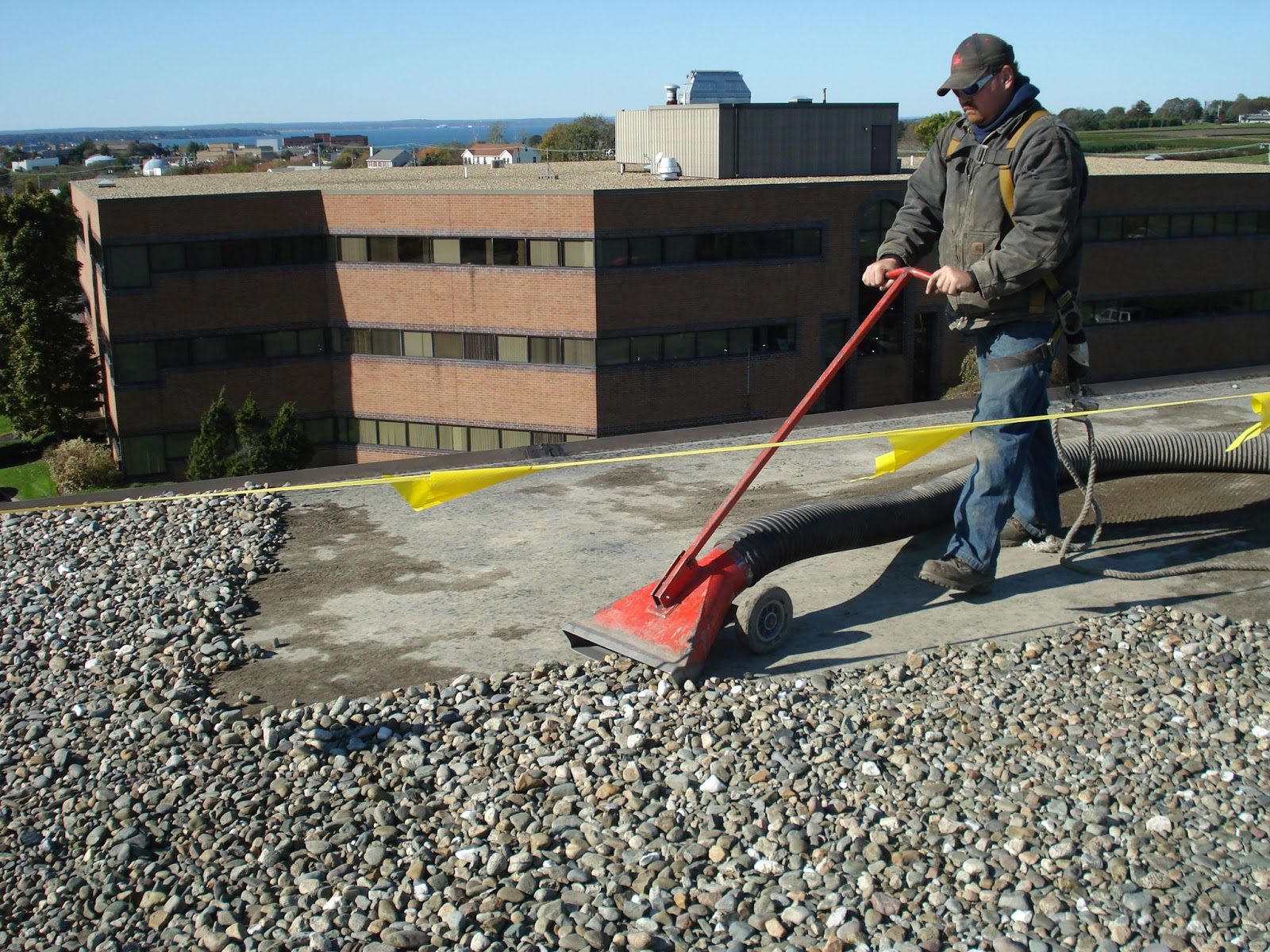Commercial buildings have been using ballasted roofs since the roofing method became more widespread in the 1960s. Ballasted roofs offer building owners a wide variety of benefits and are easier to install than other roofing methods.
A ballasted roof is an unmoored roofing system secured in place on flat roofs by the weight of small rocks, gravel, and pebbles. So, for example, if you had EPDM membrane installed on your commercial roof, the only thing holding it in place would be the accumulated weight of the small rocks covering it.
Ballasted roofs are not an ad hoc or hastily constructed roofing design method. On the contrary, extensive wind tunnel testing conducted over decades has proven that rocks used as ballast can keep unmoored roofing systems in place in the rain, wind, and other forms of inclement weather.
Aesthetically pleasing rocks as roof ballast are plentiful, affordable to procure, and relatively quick to install than other roofing methods. In addition, rocks don’t burn, so a ballasted roof can act as a natural fire retardant. And light-colored roof ballast can reflect heat energy from the sun, saving money on energy costs.
Additionally, ballasted roofs provide excellent UV protection, since they cover the roof system from the sun’s UV rays.
Related: Adding On Or Renovating Your Commercial Property? Consider Upgrading Your Roof
Easy to Replace
Ballasted roof repair is easy to undertake because the ballast, or rocks, never need repair. They just get replaced or rotated.
Rocks can wear down over time in weather or chip and crack and become unpleasing visually. Ballast rocks can also break down and wear over time due to foot traffic.
A professional roof contractor can quickly remove and replace rocks on a ballasted roof.
UV Protection
Ballasted roofs offer unprecedented protection from the sun’s harmful UV rays. This is because the sun hits the ballast stone instead of the roof membrane. As a result, the roof membrane will most likely last longer on a ballasted roof system than other installation techniques.
Walkways to Protect Membranes
One of the most pleasing aspects of a ballasted roof is the visual of a flat roof covered in a sea of small rocks. However, that view sometimes comes with a price.
If you need to walk on the rocks, the ballast will act as pressure stones poking into the membrane underneath. Over time, the ballast may wear down and scrape the underlying membrane.
If you have this problem, you can replace the rocks, repair or replace the membrane, and then add strategically placed, weighted flat stones or metal in the ballast as a visual walkway. Anyone needing roof access can walk on the walkway to protect the membrane under the ballast.
Call Us
Do you need professional guidance on ballasted roof repair on your commercial property?
Contact Chaffee Roofing today.
The expert roofing professionals at Chaffee Roofing have decades of experience and know-how to assist you.
Schedule a roof inspection with Chaffee Roofing today.
Related: EPDM Warranties Explained (And Why It’s So Popular)
